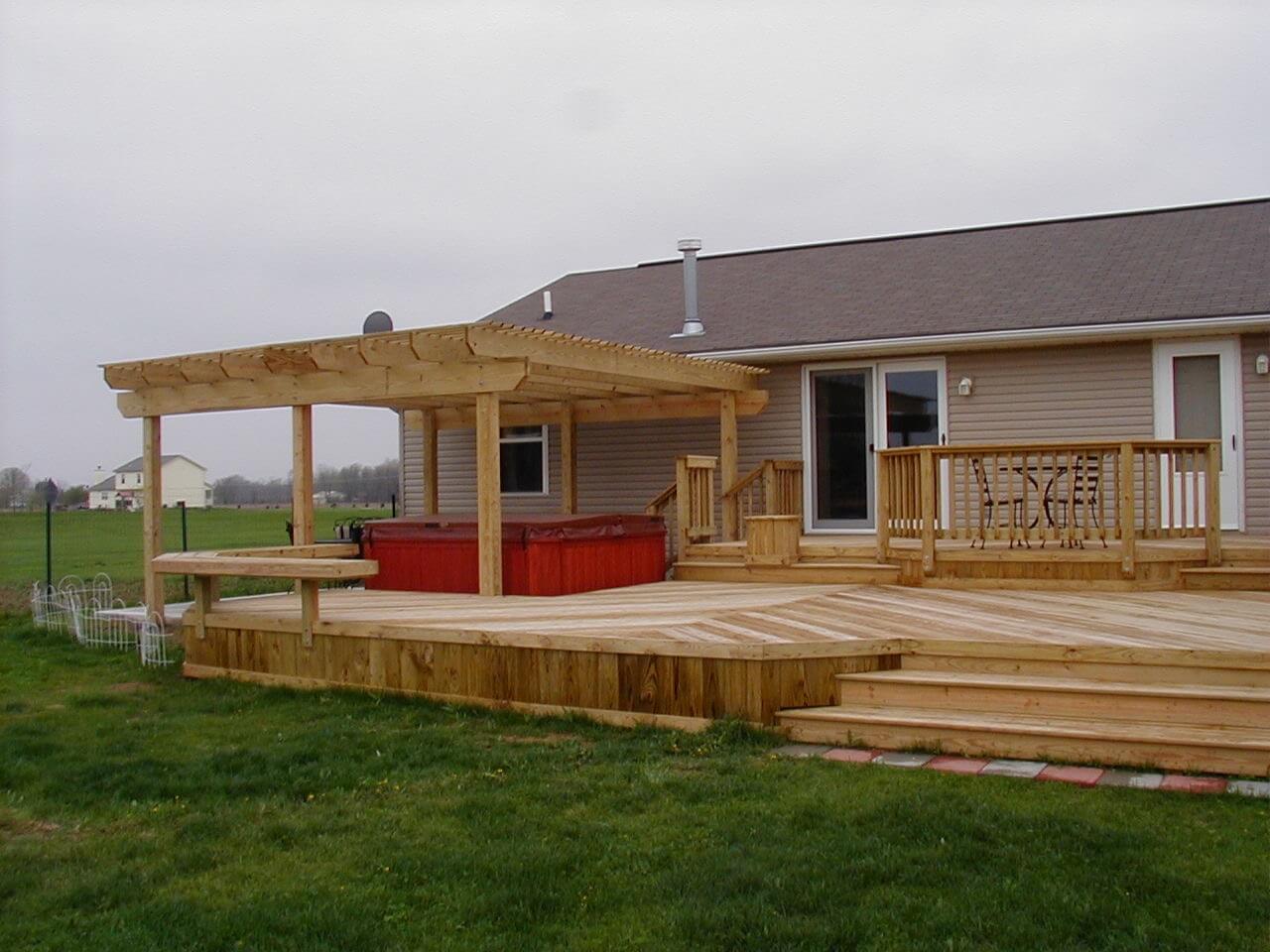Pressure treated pine (PTP) is the #1 choice in America for outdoor structures. A variety of factors account for its perennial popularity. The two top reasons are that it is inexpensive and that it is easy to work with. At Archadeck, the substructures for all of our decks and porches are made from pressure treated pine, even on the projects where the floors and railings are built of something else. Pressure treated pine has an added benefit. It boasts a classic look that many people enjoy: natural wood grain. Nothing, except for real wood, looks like real natural authentic wood.

What are the drawbacks of building with PTP? The main problem is that it’s very reactive to the sun. If you are not diligent about the care and maintenance of pressure-treated pine, it will change color, crack, warp, and cup. Depending on the weather and environment where you live, it may also be susceptible to mold, rot, and insect damage. Note that I said, “if”. PTP decks and porches can have very long, beautiful, and useful lives if you treat them right. No product will last forever.

The first rule in PTP deck care is to wet it down regularly. If your deck spends many hours each day in direct sunlight, you may want to hose it down several times a week. If you happen to have an irrigation system in your yard, this may be as easy as including in your timer’s cycle. You want to get in the habit of doing this before it cracks. You can’t reverse cracking once it starts.

Stripping, cleaning, and staining with a UV protective exterior wood product will also go a long way toward protecting your investment. For a deck with average sun exposure, once a year should be an adequate frequency to go through this process. You can choose to apply a transparent sealer, a semi-transparent or opaque stain, or even use exterior paint. My favorite of these is semi-transparent stain. It provides good protection with a slight color enhancement. The opaque stains offer the same protection, but wear and tear from normal foot traffic will be more noticeable.

Transparent sealers have no stain in them and are the easiest to “strip” when the time comes. If you don’t mind the inevitable gray cast your deck will acquire as a result of those powerful UV rays, this may be a good choice for you. I listed painting as an option, but it really is a poor choice for horizontal surfaces, including decking, bench seats, and rail caps. It will wear and it will be very noticeable. If you want to use paint, I recommend reserving it for vertical components like rail posts and pickets.
When it comes to specific product recommendations, I have gotten the best feedback on the deck stains from Cabot Stain and Sherwin-Williams. Neither is inexpensive, but both have very solid reputations. Both can be applied by a homeowner with a free weekend or you can use a local painter. Think of it like getting your teeth cleaned. You know you need to do it, so just do it.
But what if you really don’t want to do it? If you are not up to the PTP challenge, Archadeck can recommend many other options for decking materials that require less daily and annual upkeep. If you have more questions about PTP vs. composites or other products for your deck or porch product, give us a call. We’ll be happy to help you make the choice that’s right for you.
Are you ready to discuss the project you’ve been thinking about? Give us a call for a free consultation (740) 265-3905. We look forward to your call.